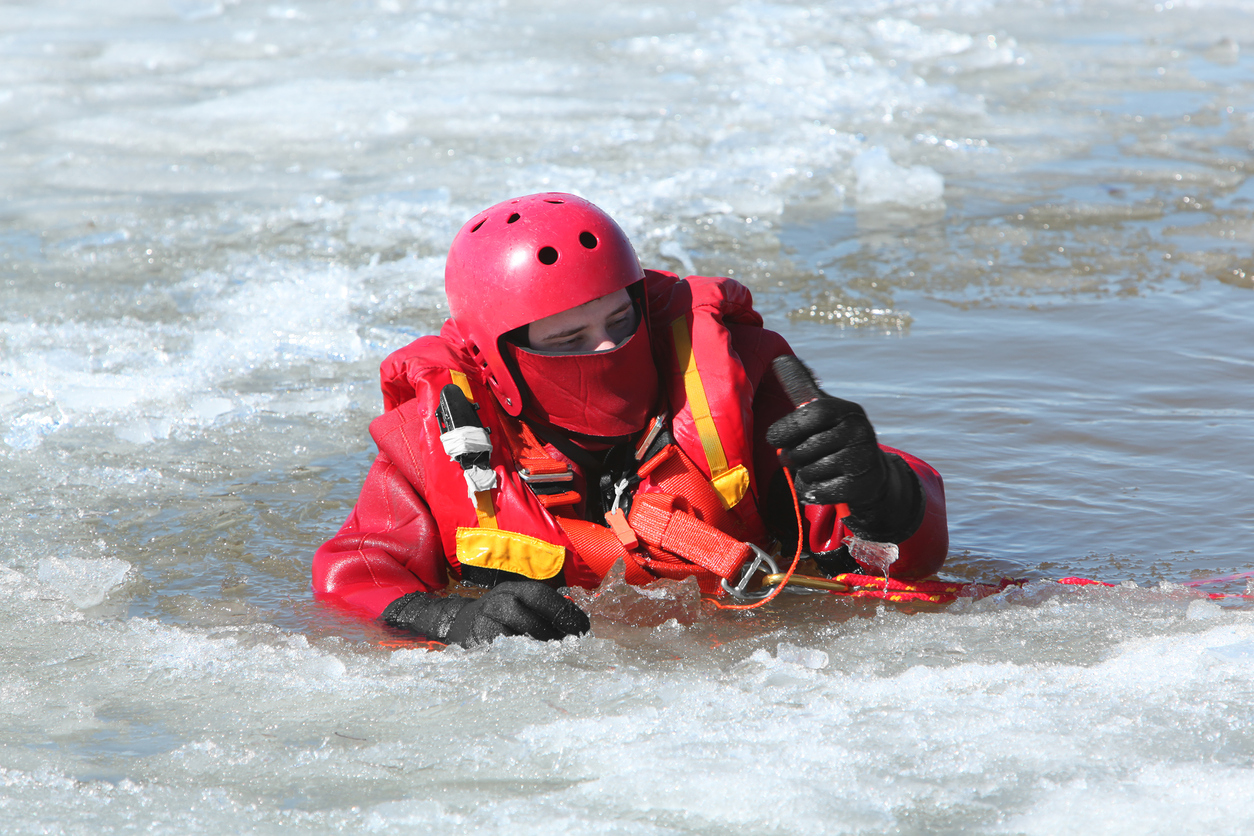
Safe working around water with RNLI guidance
Published Apr 26, 2023
Unfortunately, around 190 people lose their lives in British and Irish waters each year. The RNLI are hoping to halve that number by 2024 and have provided guidance to help them achieve this, and for you to manage the risk in your operations.
Most people won’t just stand by and do nothing while someone’s in trouble in the water. Whilst on a lifeguarded beach there is immediate support at hand, what can you do when it is out of season or in a body of water where there are no lifeguards?
What you need to do
If people must work over or in the vicinity of water (or any other liquid) there must be measures in place to prevent a fall into and, if need be, effect a safe rescue. Safe systems of work, training, emergency procedures and properly maintained equipment are all necessary to be able to respond effectively in an emergency.
What you need to know
The most immediate danger following a fall into water or other liquid is drowning. This can be caused by
- Shock of sudden immersion in cold water
- Weight of saturated clothing
- Incapacity following injury
- Fatigue of hypothermia where rescue is not immediate
Further risks when working near water
In addition to the risk of drowning, there are multiple other risks to consider including, but not limited to:
- Slips and trips by the water edge
- Movement, collision and crushing with moving vehicles on land and/or water
- Insecure banks that can collapse
- Contact with contaminated water
- Exposure to extremes of weather conditions
- Impact with submerged or floating objects
- Fall from height hitting the water surface
- Using tools, equipment and plant alongside water
Preventing a fall and other controls
Where there is a reasonable expectation of risk of falling into a body of water, barriers of sufficient strength and stability should be erected. Consideration should also be given to covering or draining the area, however this can also generate additional risks of a fall from height.
Unfortunately, it may not always be possible to erect barriers and so further controls are also required, such as preventing lone working; maintaining high standards of housekeeping and access and egress; provision of suitable PPE to include buoyancy aids, clothing and appropriate footwear; having rescue equipment available; having an emergency rescue plan in place; having clear warning signage in place; provision of suitable information, instruction, training and supervision to all personnel.
RNLI Six steps to saving a life without risking your own
Keep alert
Don’t expect a casualty to be shouting for help – they may be struggling to breath and drowning looks very different to how it’s portrayed in the movies. If you’re not sure, shout out to them “Do you need help” – if they say yes or don’t respond then it is time to act.
Resist temptation
Don’t be tempted to go in – the water might be cold and affect your ability to swim, or there could be an undercurrent that is not clear to see. The likelihood is that whatever has caused the casualty to need help could affect you too. Stay well back from the edge.
Call 999 or 112
Call the emergency services before you do anything else so you know that help is on its way. If you don’t have a phone, seek help from passers by or neighbouring buildings and businesses.
Shout and signal
From the shore or water’s edge you will have a better view of the area than the casualty. Shout and encourage them to stay calm and float. Remind them to kick their legs gently.
Find a rescue aid
If there is a life ring, throw bag or other public rescue aid equipment nearby, quickly read any instruction then throw it to the casualty. If rescue equipment isn’t available, you can use anything that will float.
Safe rescue
Before you pull the casualty in, get down on one knee to steady yourself and ensure you don’t fall in yourself. Remember, the emergency services should be on their way, so if you can’t bring the casualty in make sure you keep sight of them and keep them calm and reassured that help is on the way.
Further advice and guidance
Working on, alongside or near water can be a very rewarding working environment, but with a lack of respect and planning the niceties can soon be replaced with tragedy. If there is the prospect of being in the vicinity of water or other liquids always ensure that your control measures are regularly reviewed and are frequently communicated to all involved personnel.
Further support and advice on this topic is available from the HSE, RNLI, other emergency services and also from our range of training and consultancy services.
Source: Dave Wright GradIOSH